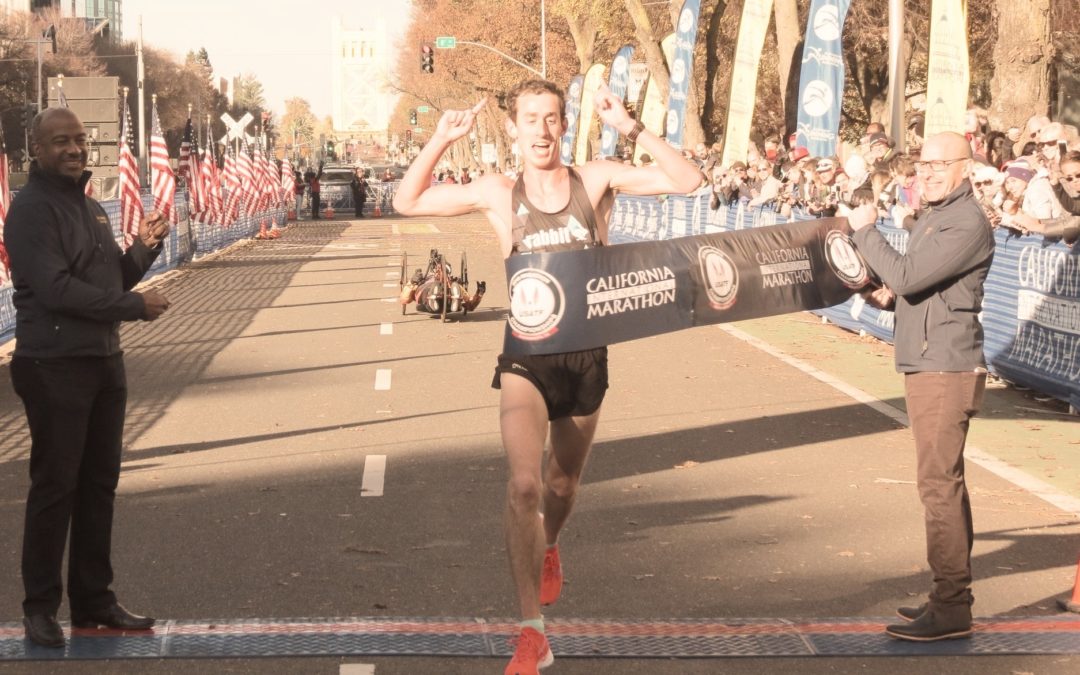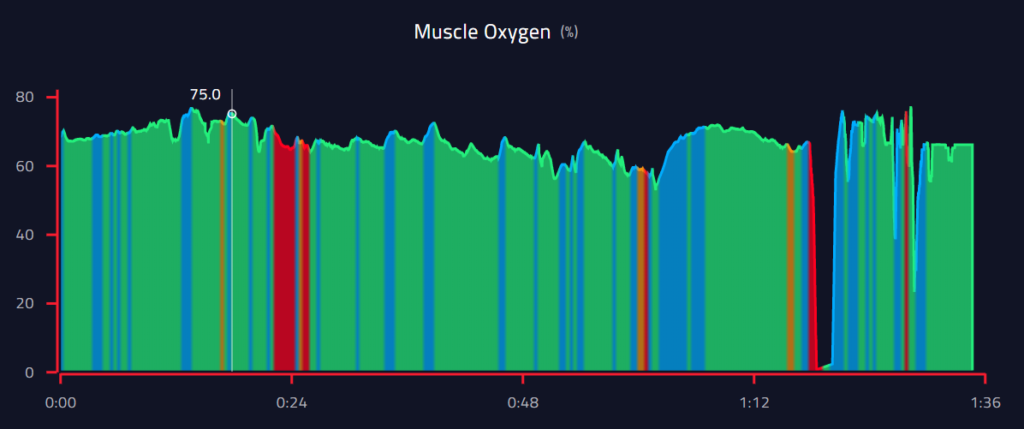Whether it is heart rate, lactate threshold, V02, etc., endurance athletes are always looking for feedback to allow them to train at the optimal pace and effort during every session. There is nothing worse than putting hours and hours into training only to not see the work pay off in the races, or worse, develop an injury. But what if there was a measurement that would be even more precise in providing feedback about the body’s response to exercise in real-time? SmO2 is one such measurement.
SmO2 stands for saturation (S) of oxygen (O2) in the muscles (m). This is not to be confused with SvO2 the saturation of oxygen in the veins (v). SvO2 is used to monitor the percent of oxygen in the blood as it moves through your body. Typically you would see this value when you have an oxygen monitor on your finger at the hospital. This value is normally in the upper 90% (if not, you have a SERIOUS problem on your hands!). Conversely, SmO2 is a measure of how much oxygen is in your muscles at any moment in time. At rest, this number is likely around 50-60% depending on your overall health and fitness. So, now that you have a functional understanding of SmO2, what next?
There are currently several devices on the market that measure SmO2 in real-time. Humon Hex is a device that has been Harvard reviewed and shown to have an accuracy rate of >95%. The device straps around the athlete’s quad and the sensor identifies two different shades of red blood cells depending on their concentration of oxygen they are transporting. The sensor then sends the information to either a paired watch (Garmin works great) or the Humon Hex app on a paired phone (iOS and Android both work). The device uses color-coding on the watch and the app in addition to showing the % of SmO2.
Blue: The amount of oxygen being delivered to the muscles is increasing.
Green: The amount of oxygen being delivered is steady in relation to what is being consumed by the muscles.
Orange: The amount of oxygen being delivered is not able to keep up with what is being consumed and the athlete is beginning to need to increase anaerobic contribution to maintain pace.
Red: The amount of oxygen being delivered is too low to maintain the work-rate required for the exercise. The athlete will need to soon stop or slow down to continue working.
The value of being able to measure this in real-time cannot be overstated. As athletes are always looking to push the lines on aerobic development, one way they do this is to train to increase the lactate threshold. If this threshold is the point at which energy begins being produced more by glycogen (anaerobic processes) than by oxygen, these sensors help identify that deflection point as it is occurring.
Here is a real example from a 15 year-old elite-level female (400: 57, 800: 2:11, 1600: 4:56, 5k xc: 18:32). She also has a tested VO2 max of 73. The athlete warmed-up until the point where the thick red line appears. That is the start of her first repetition. As you can see, the warm-up helps to increase her SmO2 before beginning the intense portion of the session. The session consisted of 800s starting at 7:00 pace and descending by 5 seconds/800. The rest interval was 10-20 seconds. She finally reached orange and red when she hit 5:30 mile pace. She was not able to complete that interval in the 2:45 prescribed. At that point, we knew that she could not maintain that pace with a majority of aerobic energy. You can see that leading up to that point she remained fairly steady in the low to mid 60% range. Upon completing the last repetition you can see that she has an extended period in the blue where her oxygen levels are elevating back to where they were when she began the workout. The cooldown throws the body into chaos for a few minutes but then settles in as it reaches a better level of homeostasis.
We now have evidence to indicate that she has a lactate threshold somewhere around 5:45 pace/mile. However, it is important to note that this effort was done on the track in mild temperatures with little to no wind. It would be foolish to assume her threshold would be the same in all conditions. This is where using a device during the workouts is valuable. Rather than worrying about her pace, she can instead keep note if her oxygen % color on the watch drops from green to orange, and ultimately to red. If it starts getting to that point she needs to pull back on the pace to stay below the threshold point for that day and those conditions. Being able to make those accurate adjustments on the fly is a game-changer for optimizing and individualizing training.
Join our performance testing lab and receive more information on how you can best add this measurement into your training going forward. Stay tuned for the next blog discussing other metrics and how they can be combined to further enhance performance.
– Ben


